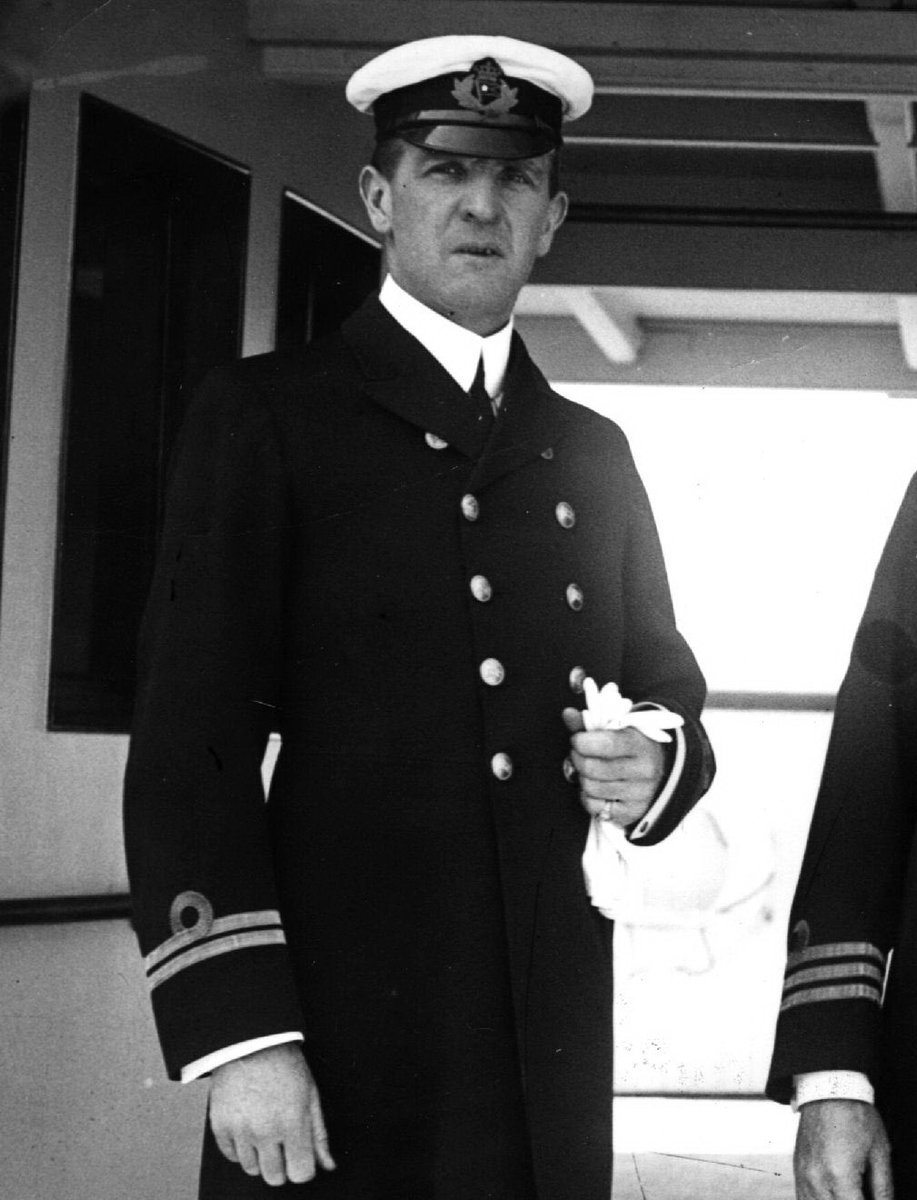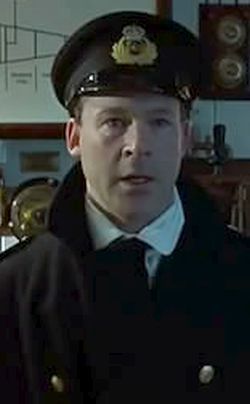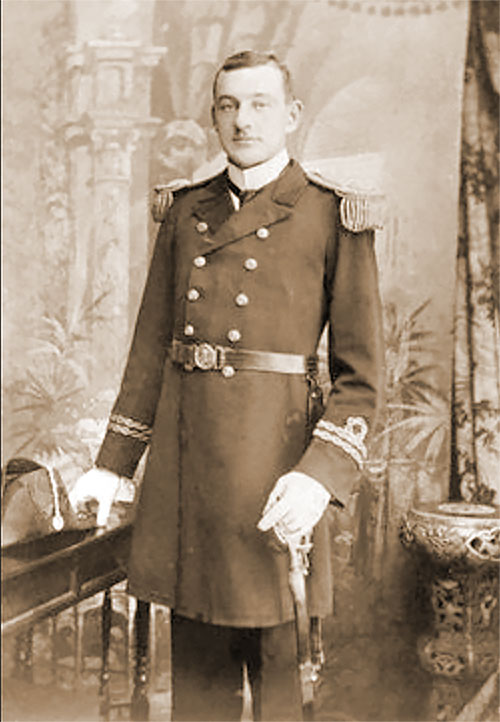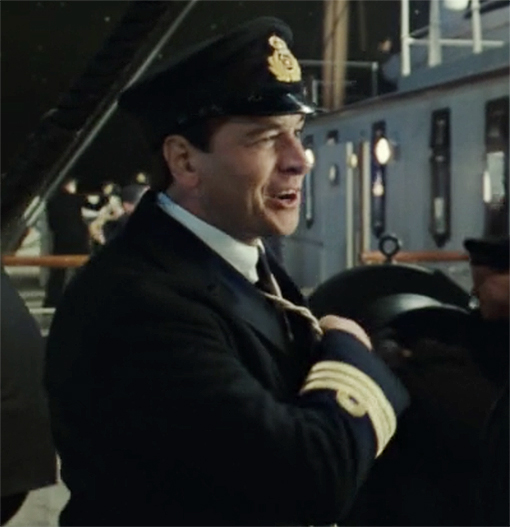First Officer William Murdoch


No character has gotten as much controversey for their portrayel in this film than William Murdoch. And we'll discuss that at length towards the end. In the film, Murdoch was portrayed by scottish actor Ewan Stewart, who also looks a lot like his real life counterpart. They really did a good job with casting in this film. Now a little background on William Murdoch. William Murdoch was born on February 28th, 1973 in Dalbeattie, Scotland. He came from a family of people who were in the sea faring life, so naturally Murdoch found himslef in that life. In 1900, he joined the White Star Line, where he climed the ranks with Charles Lightoller(the future second officer of the Titanic). In 1911 under the command of Captain Edward Smith, he became the first officer of the Olympic. The follwoing year he was selected to be the chief officer of the Titanic, again under the command of Smith, and with Lightoller as first officer. However, due to a last minute reshake of the crew, Murdoch and Lightoller were both knocked down a rank while Henry Wilde became the chief officer. On the night of April 14th, he was at the bridge of the Titanic when the iceberg collison happened, and was in charge of the lowering of the starboard lifeboats. He along with Smith and Andrews went down with the ship.
Now with the movie scenes
The first scene with Murdoch is the "take her to see" scene. This scene shows that Murdoch in the movie had respect for Smith, as he no doubt did in real life. This is the only scene with Murdoch for a long while. Shortly before the big iceberg scene, we have a scene where Officer Lightoller gives Murdoch control of the nightwatch. This happened around 10 pm in real life. In the film, Murdoch asks Lightoller if he had ever found the binnoculars, and Lightoller responds with "haven't see seen them since Southhampton." Lightoller's account of what they had discussed differed in the years following. He was asked at the inquiry, if they had ever discuss the ice danger, to which he responded with 'No', but years later he did say that they did. As for the missing binoculars, the key to the locker that they were kept in was accidently taken off the ship by David Blair(the orginal second officer) when he was fired from the ship.


Now the big scene where the Titanic hits the iceberg. This is how it happened in the film. At 11:39 pm, lookout Frederick Fleet and Reginald Lee spot the iceberg in the crows nest. Fleet rings the warning bell, which get the attention of Murdoch, Fleet telephones the Bridge, which Sixth Officer Moody picks up the phones, Fleet tells him iceberg right ahead, Murdoch realizes that there's an iceberg, he orders a hard-a-starboard(turn the ship to the left), and orders the engines to be reversed. However, it's too late, and the Titanic hits the iceberg on the starboard side, opening 6 compartments to flood damage. Murdoch orders a hard-a-port to prevent further damage to the hull. Now, lets talk about what happened.
First off, it seems likely that Murdoch was the only who spotted the iceberg before the lookouts. According to Fleet, just as he picked up the phone, the ship began to turn, meaning that the order to turn the ship was given right before Fleet rang the bell. Second off, Murdoch did not order the engines to be reversed. The idea that he ordered them to be reversed is only supported by the tesitmony of Fourth Officer Boxhall, and only heard Murdoch say this is Smith after the collison. According to the surviving stokers in the engine room, the engines were ordered to be stopped. Putting the engines in reverse would only have slowed down the ship further, something that an experienced sea officer like Murdoch would've known. Third off, Murdoch really did order the ship hard-a-port to prevent further damage to the hull.
When the collison happened, Murdoch closed the watertight doors. This happened both in the movie and in real life. After the collison, Smith entered the Bridge. The conversation between Smith and Murdoch in the movie is almost an exact transcript of what Officer Boxhall(who had entered the bridge at the same time Smith did, and is seen in the background of the scene in the movie) said he heard Smith and Murdoch say to eachother. In the scene where Andrews gives Smith and Ismay the full run down on the damage to the ship, Murdoch and the other officers are there to hear. This did not happen. Sorry I have to keep mentioning that. Word of what happened went down the ranks, and during this time, Murdoch was preparing the lifeboats for the evacuation.
When the lifeboats were order to be lowered with Smith's vague order of "Women and Children First", Murdoch and Lightoller(the two main officers in charge of lowering the boats), had to interpet what Smith had meant. Lightoller thought it meant "Women and Children Only" as in no non sailor men at all. Murdoch however, thought it meant "Women and Children First", as in put the women and children in the boats, and then men. Murdoch unlike the other officers, allowed men into the lifeboats, and most of the lifeboats he launched were to full capacity. Murdoch also launched the first lifeboat, number 7, and this is portrayed in the movie. However, in the movie it's shown that the crew lowered the boat very quickly, not keeping the ropes dangling the boat balanced. This did not happen to lifeboat 7, but it actually happened to lifeboat 5.

It seems that Murdoch did lower the boats at a very quick pace. At around 1:40 am, he lowered both Lifeboat 13 and 15 almost at the same time. Number 13 reached the water first, and it floated beaneth number 15. The sailors on 13 hadn't cut the ropes yet, so they had to work fast. They cut the ropes, and got out of 15's way just as it reached the water. This event is depicted in the film. Also, when Ismay enters collaspable c, Murdoch orders the boat to be lowered away. This was already dicussed in the Ismay page.
Now it's time to discuss the controversy. When Cal first meets with Murdoch during the sinking, it's to bribe his way onto a lifeboat. He gives Murdoch a couple hundreds as payment, to which Murdoch doesn't respond to. Now, I'm going to make it clear, there is no record of anyone trying to bribe Murdoch. This was an invention of the filmmakers. But that is chickenfeed in comparison to the next controversy.
One of the most talked about scenes in the movie is Murdoch fending off a mob trying to get on collasble a. Collasplable a was stored on the roof of the officers quarters right behind the bridge, and was slide off the roof, and being prepared for launching. A large mob formed around it trying to get onboard. In the film Murdoch and Wilde are fending off the mob with armed with pistols. Cal demands to be let on the boat, Murdoch throw him back his money. He doesn't want it. Then he shoots two men dead, and then turns the gun on himself. This scene, caused a great deal of controversey between James Cameron and Murdoch's family. They despised it. In recent years, Cameron has stated that he's regretted the way Murdoch was portrayed, but did this event happened?


The seinor officers(chief, first, and second) were given guns during the evactuation to subdue rioters. THat much is true. But whether this exact event happened is uncertain. There are just as many people who say it happened, as there are there who say it didn't. And there are reports of Murdoch being in the water after this supposed event happened, such as reported by Lightoller and radio operator Harlod Bride. But these can be debated. Lightoller was infamous for changing elements of his tesitmony to protect his employers and his friends. Perhaps, Lightoller didn't want Murdoch in a bad light. Bride didn't personally know any of the officers on the Titanic, and only stated that Murdoch was in the water decades later in the 50s. How would he know for sure?
It seems likely that this story did indeed happen, as it was talked about onboard the Carpthia, but if it wasn't Murdoch then who was it? Some people say it was actually Chief Officer Henry Wilde. Wilde, who is actually in the scene in the movie, is a bit of a mystery. A lot of people have confused him for Murdoch in their testimonies. Prephaps they confused him here as well. Wilde also had both his wife and twin sons die two years prior. If you read his diary entries from around this time, it does seem like he's had some kind of depression. So perhaps he actually was the suicide officer? In the end, we'll never know for sure, as both the bodies of Murdoch and Wilde were never found.
Overall, I'm mixed about Murdoch in the film. It seems like they mostly got him right, but the end with him killing himself, just feels like a punch to the gut. If I was making the film, I probably wouldn't have had this scene with the suicide with either Murdoch or Wilde.